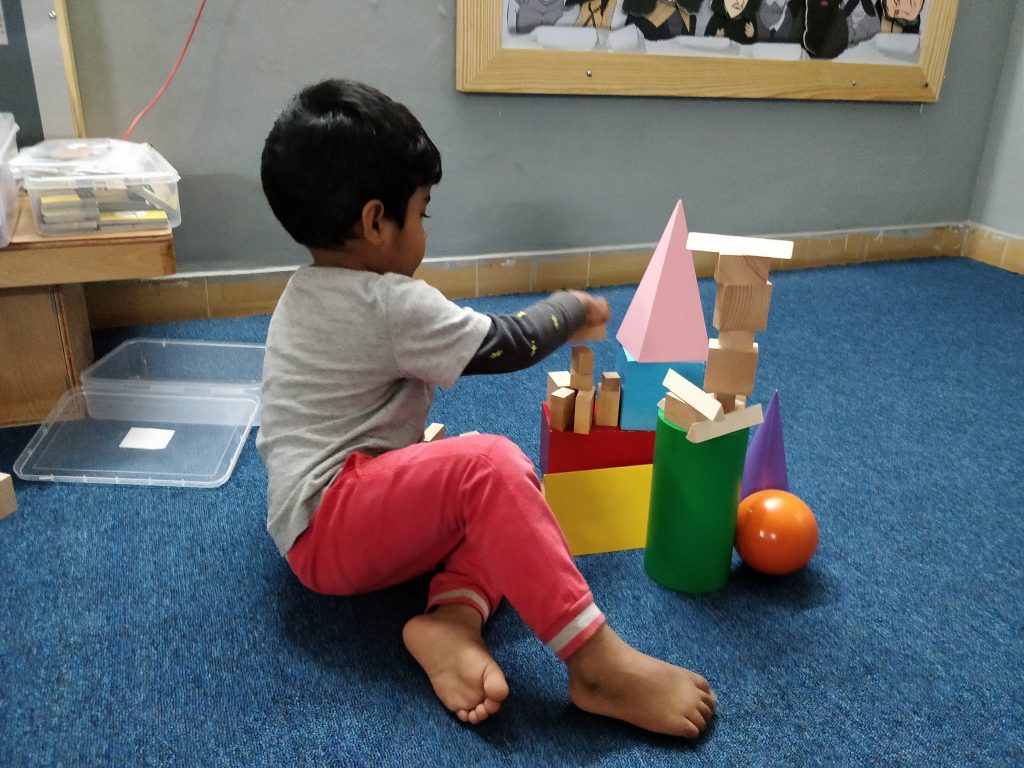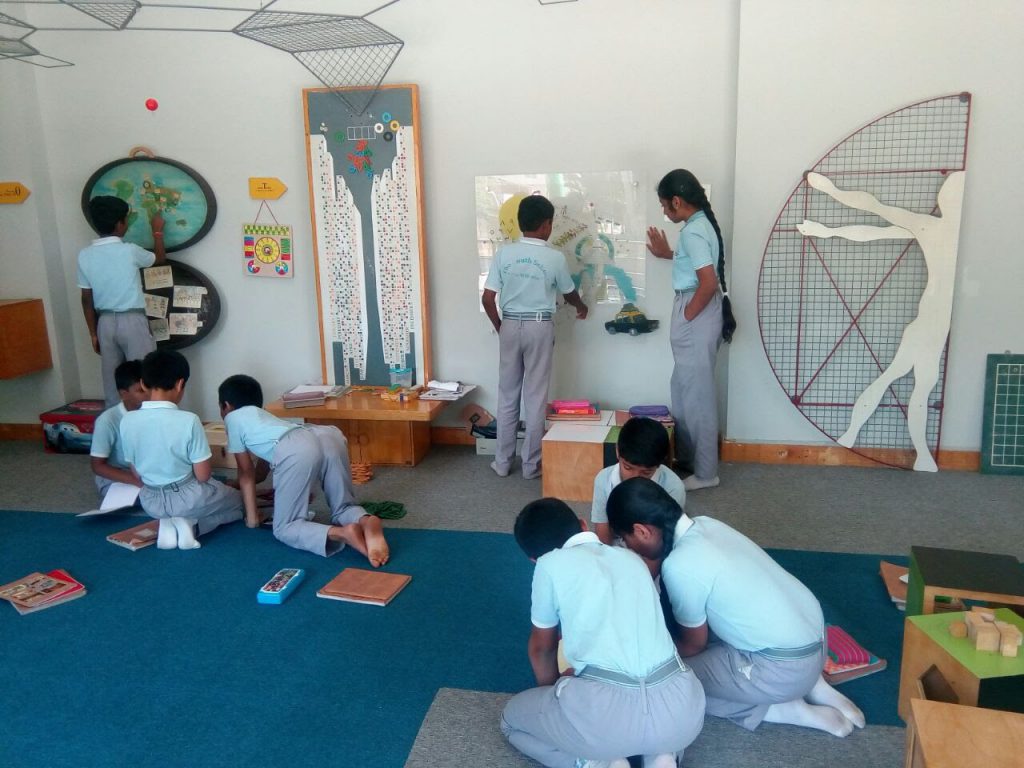Introduction
We at NumberNagar® has been working hard to create the blueprint of Personalised Learning. We think that personalised learning can be done by a blend of student-teacher interaction and some assistance of technology. We strongly feel that technology should act only as an enabler to reach our goals of giving personalised content to children.
Personalised learning, by definition, is learning anywhere anytime with emphasis on personalising the content to suit the need of a student.
While it does not necessarily require technology, one needs to focus on individual learner’s pace, need, and interests. In other words, we focus on learners’ profile and evidence of competency-based progression. These are the two key aspects to create tailored and more impactful learning content.
Autopilot mode of learning for kids

In our experience, using the right blend of these methodologies make the children curious. Once we achieve our goal of making the child curious, everything is on autopilot. After that, the child can himself/herself drive the learning.
Let’s look at some of the important aspects of personalised learning. In addition, we will also discuss how technology plays a major role in each of these.
1. Why Personalised Learning
Today is the age of personalisation. Everything is personalised to give optimum experience to the consumers. Personalisation helps better adoption of such consumer goods and services.
The same thing applies to learning too. Personalisation of learning results in better adoption and grasping, as it is now suited for the individual. When kids see the progress in their learning, they become more curious day after day.
2. Personalised Learning teaching strategies
Personalised learning, by definition, is learning anywhere anytime. In personalised learning, we, as teachers, give emphasis on personalising the content to suit the need of a student.
Personalised learning, aided by computers can improve student engagement, increase attendance and better behaviour. This can also take care of the constraints of the one-size-fits-all education system or one-to-many teaching.
3. Personalised Learning goals in schools
Personalised learning plays an active role in student’s learning with a range of techniques and flexibility of being allowed to complete their assignments at their own pace. The outcomes have already impressed many teachers and schools. (Please feel free to ask us for examples and testimonials.)

“Personalised learning is tailoring learning for each student’s strengths, needs, and interests — including enabling student’s voice and choice in what, how, when and where they learn — to provide flexibility and supports to ensure mastery of the highest standards possible”, says iNACOL, a nonprofit that supports personalised and competency-based education.“
4. Personalised Learning in the classroom
We see a trend towards modern classrooms in prominent cities where they are trying to reap the benefits of having their old methods enhanced with the use of technology. This approach to learning is called Blended learning. In this type of learning, educators focus on the pedagogical changes and practices of blended learning. At the same time, teachers facilitate the personalisation of student learning.
We at NumberNagar®, use Blended Learning as an enabler for Personalised Learning.
5. Need for ICT (Information and Communication Technology) in education
This is the secret blend of bringing technology and education together to enhance the delivery of information beyond the classroom. ICT plays a significant role in providing access to learning materials through remote devices. In fact, the flipped classroom concept can be well-implemented to make use of efficient technology in an institution. Likewise, Massive Open Online Courses (MOOCs) can be useful to reach more students and facilitate learning without time constrains.
This is all about scale and reaching the masses, and we, as teachers can’t achieve. Use of technology is important in this massive rollout of personalisation. We think this will help make a large number of children curious.
6. Personalised Learning technology

Technology – in the form of gadgets and applications – has penetrated every aspect of our lives. Young and old alike use technology for every task, from the mundane to the profound. There’s a gadget for this, there’s an app for that – we commonly hear these words in everyday conversation. It is no surprise that the field of education has come under the same onslaught.
We use EdTech or “Education Technology” as the collective name of technology used and applied in Education. EdTech is also about using technologies like Machine Learning (ML), Augmented Reality (AR), and similar technologies to give personalised content.
Summary of the benefits of Personalised learning
Personalised learning reinforces children’s learning by:
- Finding out areas where they need to focus more
- Emphasising on complex concepts by means of media and immersive content
- Making children curious about the concepts so they can start discovering the hidden side of everything
- Connecting children to their immediate locality, city and to the global world so that their learning here could be connected to other children’s learning worldwide
tl;dr
Personalised learning can help us achieve the goal of making the children curious. This helps them learn how to learn. After this, learning happens in auto-pilot mode.
(Image credits – Pixabay)
This article is co-authored by Parimita and Nishant.
Parimita Krishna
Latest posts by Parimita Krishna (see all)
- How Personalised Learning can make your kids curious? - 14 June 2019
- What’s new in CBSE and why Experiential Learning is even more relevant? - 31 May 2019
- The Curious Case of Homeschooling in India - 5 April 2019
- Making Maths fun for your kids - 8 March 2019
- Blended Learning: A Perspective on “Learning how to Learn” - 22 February 2019


Face to face interaction combined with technology and individual attention for the kids is the need of the hour.
Personalised learning improves the curiosity of the child. Necessity is the mother of invention . Make the kids to feel the necessity of learning . Experimental learning is more relevant and impressive for the younger generation. We teachers should join together to bring out the creative minds of educative world of tomorrow.
Thanks, Subhashini. Very good thoughts indeed. We at NumberNagar are looking at these aspects to make the children curious and take the learning to the next level.
Good one..if a teacher wants to make the special child of the class he/ she can do this personalised learning with him/her provided he/she should see that the child never loses his curiosity because these type of children need special attention..
Dear Naveen,
Yes. We believe that every child, irrespective of his/her needs, can benefit from personalised learning. The important part as you mentioned is to make sure that the child doesn’t lose curiosity.